Naqsh e Jahan Square- Image of the World Square
Naqsh e Jahan Square – Image of the World Square
Naqsh-e Jahan Square (trans: “Image of the World Square”), also known as Shah Square , is a square situated at the center of Isfahan, Iran. Naqsh-e Jahan Square Constructed between 1598 and 1629, it is now an important historical site, and one of UNESCO’s World Heritage Sites. Naqsh-e Jahan Square is 160 metres (520 ft) wide by 560 metres (1,840 ft) long (an area of 89,600 square metres (964,000 sq ft)). Naqsh-e Jahan Square is also referred to as Shah Square or Imam Square. The square is surrounded by buildings from the Safavid era. The Shah Mosque is situated on the south side of this square. On the west side is the Ali Qapu Palace. Sheikh Lotf Allah Mosque is situated on the eastern side of this square and at the northern side Qeysarie Gate opens into the Isfahan Grand Bazaar. Today, Namaaz-e Jom’eh (the Muslim Friday prayer) is held in the Shah Mosque.
History
In 1598, when Shah Abbas decided to move the capital of his empire from the north-western city of Qazvin to the central city of Isfahan, he initiated what would become one of the greatest programmes in Persian history; the complete remaking of the city. By choosing the central city of Isfahan, fertilized by the Zāyande roud (“The life-giving river”), lying as an oasis of intense cultivation in the midst of a vast area of arid landscape, he distanced his capital from any future assaults by the Ottomans, the arch rival of the Safavids, and the Uzbeks, and at the same time gained more control over the Persian Gulf, which had recently become an important trading route for the Dutch and British East India Companies.
The chief architect of this colossal task of urban planning was Shaykh Bahai (Baha’ ad-Din al-`Amili), who focused the programme on two key features of Shah Abbas’s master plan: the Chahar Bagh avenue, flanked at either side by all the prominent institutions of the city, such as the residences of all foreign dignitaries, and the Naqsh-e Jahan Square (“Exemplar of the World”).Prior to the Shah’s ascent to power, Persia had a decentralized power-structure, in which different institutions battled for power, including both the military (the Qizilbash) and governors of the different provinces making up the empire.
Shah Abbas wanted to undermine this political structure, and the recreation of Isfahan, as a Grand capital of Persia, was an important step in centralizing the power. The ingenuity of the square, or Maidān, was that, by building it, Shah Abbas would gather the three main components of power in Persia in his own backyard; the power of the clergy, represented by the Masjed-e Shah, the power of the merchants, represented by the Imperial Bazaar, and of course, the power of the Shah himself, residing in the Ali Qapu Palace.
Maidan – The Royal Square
The Maidan was where the Shah and the people met. Built as a two story row of shops, flanked by impressive architecture, and eventually leading up to the northern end, where the Imperial Bazaar was situated. The square was a busy arena of entertainment and business, exchanged between people from all corners of the world. As Isfahan was a vital stop along the Silk Road, goods from all the civilized countries of the world, spanning from Portugal in the West, to the Middle Kingdom in the East, found its ways to the hands of gifted merchants, who knew how to make the best profits out of them.
The Royal Square was also admired by Europeans who visited Isfahan during Shah Abbas’ reign. Pietro Della Valle conceded that it outshone the Piazza Navona in his native Rome.
During the day, much of the square was occupied by the tents and stalls of tradesmen, who paid a weekly rental to the government. There were also entertainers and actors. If you’re hungry, there are readily available cooked foods or slices of melon, while cups of water are hand out for free by water-carriers paid for by the shop-keepers. At the entrance to the Imperial Bazaar, there were coffee-houses, where people could relax over a cup of fresh coffee and a water-pipe. These shops can still be found today, although the drink in fashion for the past century has been tea, rather than coffee. At dusk, the shop-keepers packed up, and the huzz and buzz of tradesmen and eager shoppers bargaining over the prices of goods would be given over to dervishes, mummers, jugglers, puppet-players, acrobats and prostitutes.
Every now and then the square would be cleared off for public ceremonies and festivities. One such occasion would be the annual event of Nowruz, the Persian New Year. Also, the national Persian sport of polo could be played in the maidan, providing the Shah, residing in the Ali Qapu palace, and the busy shoppers with some entertainment. The marble goal-posts, erected by Shah Abbas, still stand at either end of the Maydan.
Under Abbas, Isfahan became a very cosmopolitan city. With a resident population of Turks, Georgians, Armenians, Indians, Chinese and a growing number of Europeans. Shah Abbas brought in some 300 Chinese artisans to work in the royal workshops and to teach the art of porcelain-making. The Indians were present in very large numbers, housed in the many caravanserais that were dedicated to them, and they mainly worked as merchants and money-changers. The Europeans were there as merchants, Roman Catholic missionaries, artists and craftsmen. Even soldiers, usually with expertise in artillery, would make the journey from Europe to Persia to make a living. The Portuguese ambassador, De Gouvea, once stated that:
“The people of Isfahan are very open in their dealings with foreigners, having to deal every day with people of several other nations.”
Also, many historians have wondered about the peculiar orientation of the maidān. Unlike most buildings of importance, this square did not lie in alignment with Mecca. When entering the entrance-portal of the Shah Mosque, one makes, almost without realising it, the half-right turn which enables the main court within to face Mecca. Donald Wilber gives the most plausible explanation to this; Shaykh Bahai has a vision for the mosque to be visible wherever in the maydān a person was situated. It had the axis of the maydān coincided with the axis of Mecca, the dome of the mosque would have been concealed from view by the towering entrance-portal leading to it. By creating an angle between them, the two parts of the building, the entrance-portal and the dome, are in perfect view for everyone within the square to admire.
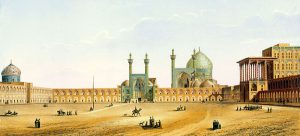
19th century drawing of Naqsh-e Jahan Square, Isfahan; this drawing is the work of French architect, Xavier Pascal Coste. Who traveled to Iran along with the French king’s embassy to Persia in 1839.

Horse and buggy in the square
The Imperial Bazaar
The Bazaar of Isfahan is a historical market and one of the oldest and largest bazaars of the Middle East. Although the present structure dates back to the Safavid era. Parts of it are more than a thousand years old, dating back to the Seljuq dynasty. It is a vaulted, two kilometer street linking the old city with the new. The bazaar was one of the greatest and luxorious trading center in the safavid era. Shah Abbas built it in 1620 on the northern side of Naqsh-e Jahan Square.
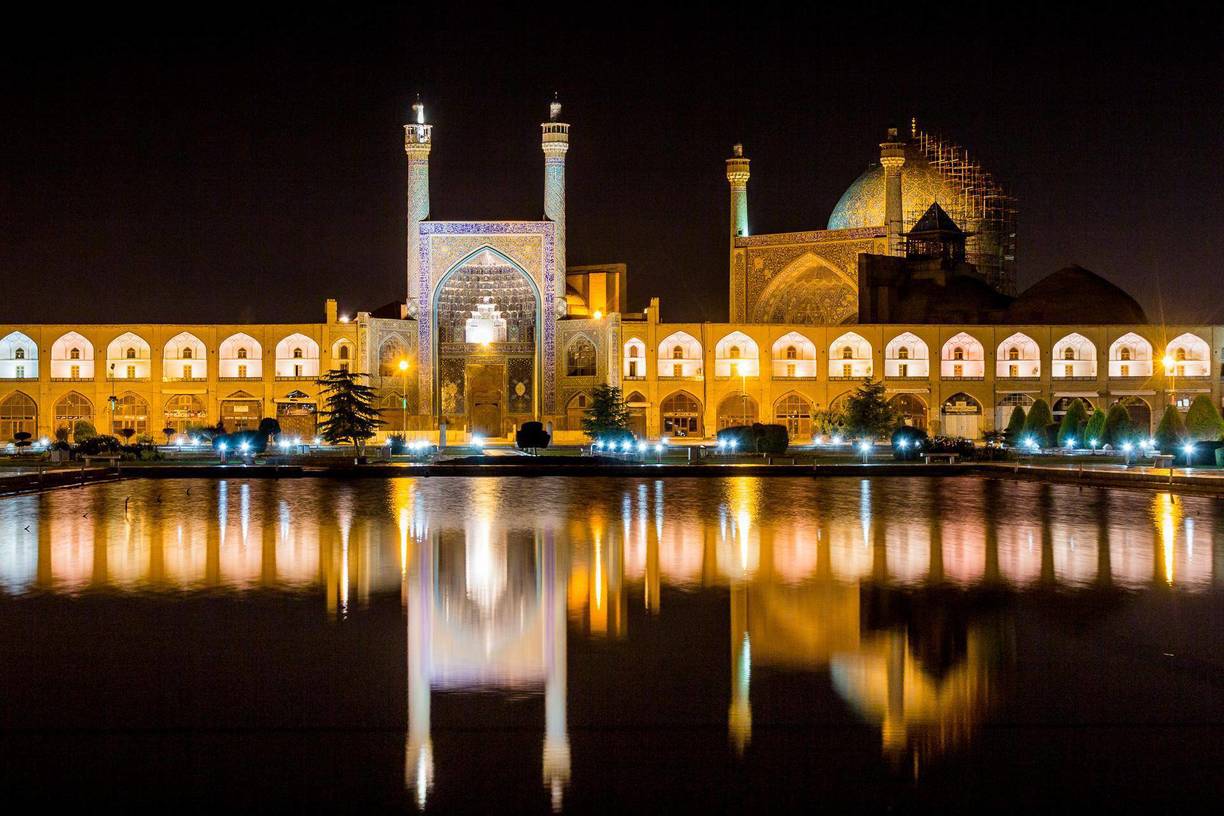
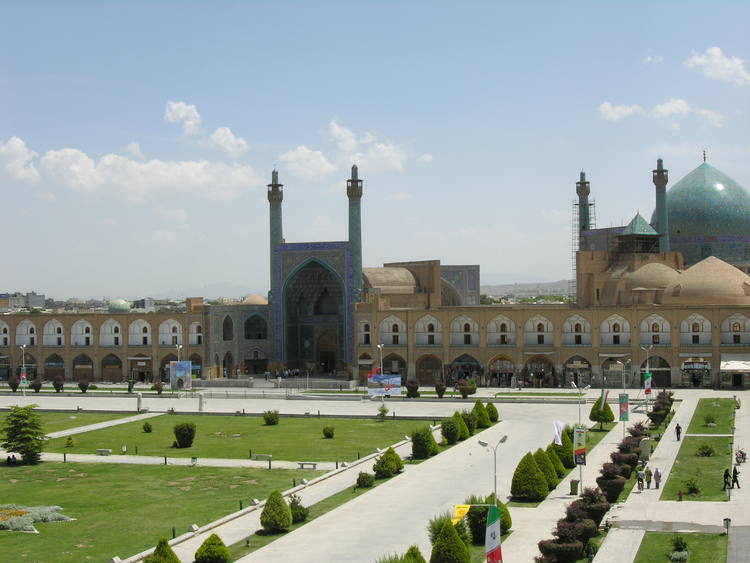
You can buy isfahan handicrafts from Vipemo


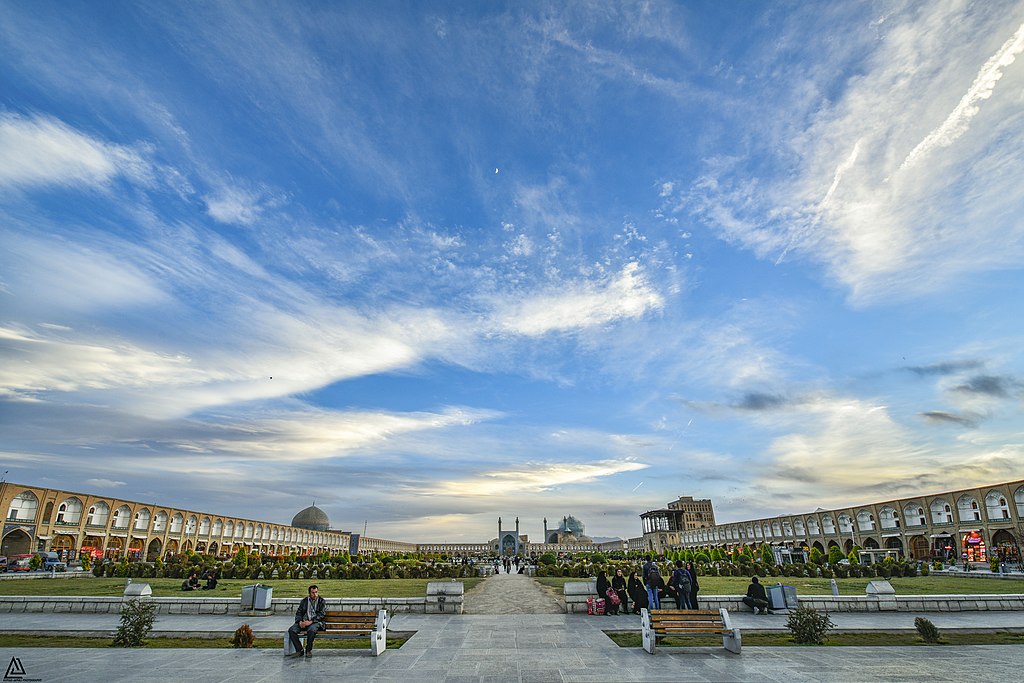
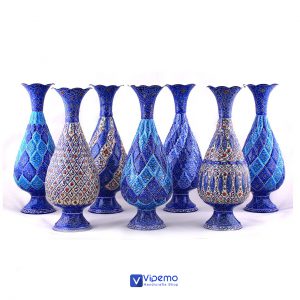
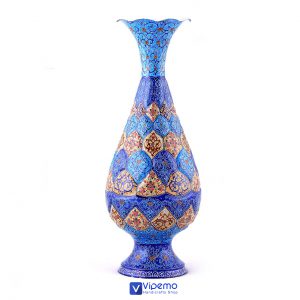
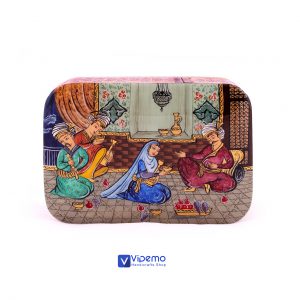
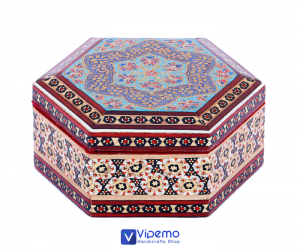
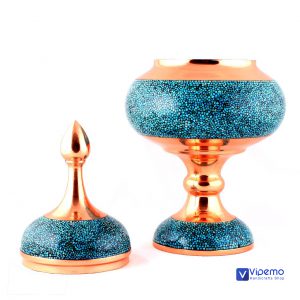

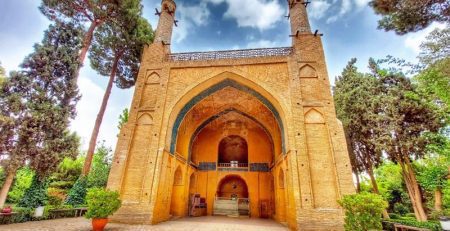
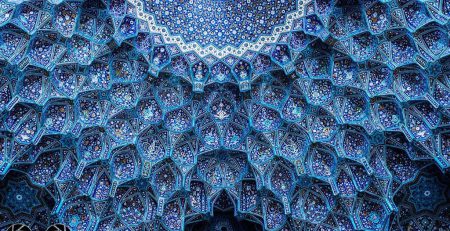
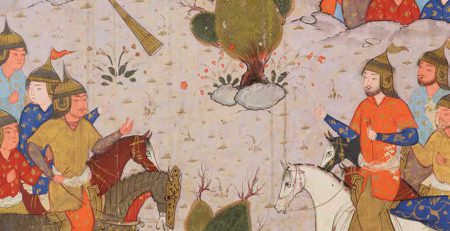
Comments (2)
[…] Naqsh-e Jahan Square also known as shah square or imam square-1602. The square contains two mosques, a palace, and the bazaar. It is the largest historic public square in the world after Tiananmen Square in Beijing and it is one of UNESCO’s World Heritage Sites and it is surrounded by buildings from the Safavid era. This a very popular place for locals to picnic on Friday and holiday evenings. […]
[…] the world’s second largest historical square. Read More […]